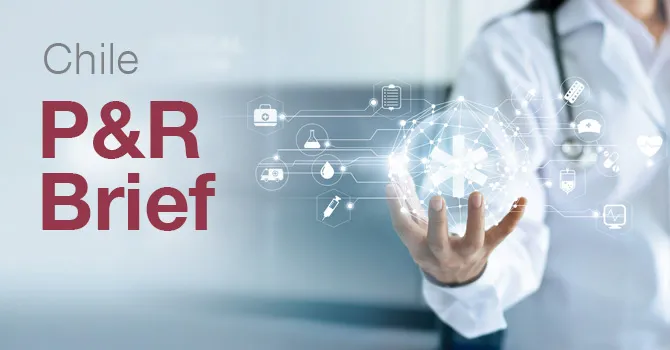The CENABAST law and the “Drugs 2” bill will have a serious effect on the Chilean pharmaceutical industry. Experts Beatriz Beamonte, Pedro Santana, and Vicente Lumbreras reveal what the changes are and advise manufacturers on how to adapt their strategies accordingly.
The Chilean government is introducing two new laws that aim to control and reduce pharmaceutical drug prices:
- The CENABAST law (law 21.198), which was passed last year
- The “Drugs 2” bill (“Fármacos 2” in Spanish)
These changes were motivated by the significant out-of-pocket burden for patients caused by the high drug prices and retail pharmacy margins. In this article we provide an overview of the changes proposed by the government, and the respective commercial implications for pharmaceutical manufacturers.
CENABAST LAW
CENABAST (National Center for Supply) has traditionally been responsible for centralizing the procurement of drugs for public hospitals and has been successful in securing lower prices due to the large volume. Approximately 250 drugs, including some high-cost examples, can currently be purchased through CENABAST. The list is expected to increase to 300 in the short term.
With the passing of the CENABAST law in January 2020, private pharmacy chains and independent pharmacies can now also purchase drugs through CENABAST. This could reduce drug acquisition costs up to about 70 percent.
Drugs procured through CENABAST are subject to a maximum retail price set by the government that is high enough to entice pharmacies to purchase through CENABAST, but still lower than current prices, generating out-of-pocket savings for patients.
So far, approximately 400 pharmacies have opted to purchase through CENABAST, and the government is working on removing logistical barriers to allow pharmacies in more remote regions to enroll as well.
DRUGS 2 BILL
The Drugs 2 bill is still under debate. However, despite the significant backlash from the pharmaceutical industry, Congress seems likely to pass it in the short term. If the law passes, the following changes will be introduced:
- Mandatory prescribing, using the international common denomination (ICD)
- Control of retail pharmacy margins via dispensation tariffs
- Use of international price referencing (IPR) to set a maximum price for drugs covered under GES (drugs with manadatory coverage in both the public and private settings)
Drug prescribing using the ICD will allow patients to choose less expensive generic options and will minimize the impact of pharmaceutical marketing on prescribing behavior. In addition, retail pharmacy prices will be set as the acquisition cost plus a dispensation tariff, which will be uniform for drugs with the same active substance. This approach aims to disincentivize pharmacies from selling treatment options that are more expensive and increase the competition for lower acquisition costs.
CENABAST has recently started to track local and international drug prices to justify demanding lower prices from manufacturers. The country basket considered for price referencing includes Germany, Argentina, Australia, Brazil, Canada, Slovenia, Spain, the US, Finland, Lebanon, New Zealand, South Africa, Sweden, and Switzerland. Once the Drugs 2 bill is passed, CENABAST will start setting maximum prices for drugs covered under GES in a more formalized IPR process (full methodology has not been disclosed yet).
Advice for manufacturers
Manufacturers should track these changes in Chile closely, as they could put considerable downward pressure on drug prices and create significant access barriers, especially for branded drugs close to loss of exclusivity or with generic competition available.
Furthermore, companies launching a new drug in Chile should consider the potential IPR for drugs covered under GES when deciding on the best access route to pursue.
Beyond pharmaceutical price control, the Chilean government is also debating an integral reform of FONASA (public healthcare insurer covering approximately 80 percent of lives). This is in earlier stages of legislation, however, and subject to modifications. We will cover this reform in a future edition of Healthcare Insights as it becomes clearer.








